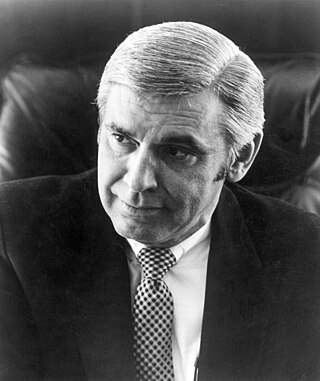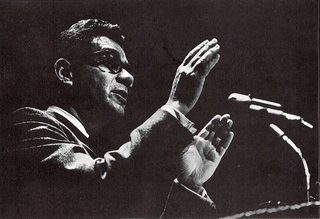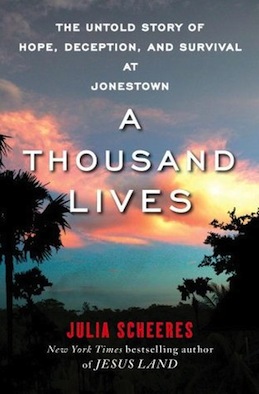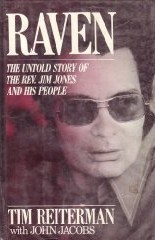
The Peoples Temple of the Disciples of Christ, originally Peoples Temple Full Gospel Church and commonly shortened to Peoples Temple, was an American new religious organization which existed between 1954 and 1978 and was affiliated with the Christian Church. Founded by Jim Jones in Indianapolis, Indiana, the Peoples Temple spread a message that combined elements of Christianity with communist and socialist ideology, with an emphasis on racial equality. After Jones moved the group to California in the 1960s and established several locations throughout the state, including its headquarters in San Francisco, the Temple forged ties with many left-wing political figures and claimed to have 20,000 members.

The Peoples Temple Agricultural Project, better known by its informal name "Jonestown", was a remote settlement in Guyana established by the Peoples Temple, an American cult under the leadership of Jim Jones. Jonestown became internationally infamous when, on November 18, 1978, a total of 918 people died at the settlement, at the nearby airstrip in Port Kaituma, and at a Temple-run building in Georgetown, Guyana's capital city. The name of the settlement became synonymous with the incidents at those locations.

James Warren Jones was an American cult leader and mass murderer who led the Peoples Temple between 1955 and 1978. In what he termed "revolutionary suicide", a term he took from the novel by the same name by Huey Newton, Jones and the members of his inner circle planned and orchestrated a mass murder-suicide in his remote jungle commune at Jonestown, Guyana, on November 18, 1978. Jones and the events that occurred at Jonestown have had a defining influence on society's perception of cults.

Leo Joseph Ryan Jr. was an American teacher and politician. A member of the Democratic Party, he served as the U.S. representative from California's 11th congressional district from 1973 until his assassination during the Jonestown massacre in 1978. Before that, he served in the California State Assembly, representing the state's 27th district.
Don Harris was an NBC News correspondent who was killed after departing Jonestown, an agricultural commune owned by the Peoples Temple in Guyana. On November 18, 1978, he and four others were killed by gunfire by Temple members at a nearby airstrip in Port Kaituma, Guyana. Their murders preceded the death of 909 Temple members in Jonestown and four Temple members in Georgetown, Guyana.

Mark Lane was an American attorney, New York state legislator, civil rights activist, and Vietnam war-crimes investigator. Sometimes referred to as a gadfly, Lane is best known as a leading researcher, author, and conspiracy theorist on the assassination of United States President John F. Kennedy. Lane authored 10 books on the JFK assassination, including Rush to Judgment,, the 1966 number-one bestselling critique of the Warren Commission and Last Word: My Indictment of the CIA in the Murder of JFK, published in 2011.
Working People's Vanguard Party (WPVP) was a small, Maoist political party in Guyana. It was formed in 1969 through a split in the People's Progressive Party (PPP) in the 1960s. The party was led by Brindley Benn and Victor Downer. Initially the party advocated a violent overthrow of the People's National Congress government, but later shifted to the right and entered into an alliance with pro-capitalist groups.

Jonestown: The Life and Death of Peoples Temple, is a 2006 documentary film made by Firelight Media, produced and directed by Stanley Nelson. The documentary reveals new footage of the incidents surrounding the Peoples Temple and its leader Jim Jones who led over 900 members of his religious group to a settlement in Guyana called Jonestown, where he orchestrated a mass suicide with poisoned Flavor Aid, in November 1978. It is in the form of a narrative with interviews with former Temple members, Jonestown survivors, and people who knew Jones.

Seductive Poison: A Jonestown Survivor's Story of Life and Death in the Peoples Temple is a first-hand account of the incidents surrounding Peoples Temple, written by survivor Deborah Layton, a high-level member of the Peoples Temple until her escape from the encampment. The first edition of the book was published by Anchor~Doubleday in hardcover on November 3, 1998, and the second edition was published in paperback on November 9, 1999. In 2014, Random House Audio made Seductive Poison into an audio-book read by the author and narrator, Kathe Mazur. Charles Krause, the young Washington Post journalist who accompanied Congressman Leo Ryan into Jonestown and was injured at the airstrip, reads his foreword.

Charles R. Garry was an American civil rights attorney who represented a number of high-profile clients in political cases during the 1960s and 1970s, including Huey P. Newton during his 1968 capital murder trial and the Peoples Temple during the 1978 Jonestown tragedy.

Guyana Tragedy: The Story of Jim Jones, also called The Mad Messiah, is a 1980 television miniseries about the Peoples Temple led by Jim Jones, and their 1978 mass suicide at Jonestown. Based on the book by Charles A. Krause, entitled Guyana Massacre: The Eyewitness Account, the film was originally shown on television on April 15, 1980.
Jonestown: Paradise Lost is a 2007 documentary television film on the History Channel about the final days of Jonestown, the Peoples Temple, and Jim Jones. From eyewitness and survivor accounts, the program recreates the last week before the mass murder-suicide on November 18, 1978.
Timothy Oliver Stoen is an American attorney best known for his central role as a member of the Peoples Temple, and as an opponent of the group during a multi-year custody battle over his six-year-old son, John. The custody battle triggered a chain of events which led to U.S. Representative Leo Ryan's investigation into the Temple's remote settlement of Jonestown in northern Guyana, which became internationally notorious in 1978 after 918 people – including Stoen's son – died in the settlement and on a nearby airstrip. Stoen continued to work as a deputy district attorney in Mendocino County, California, where he was assigned to the District Attorney's Fort Bragg office. Stoen later joined the Mendocino County Public Defenders. He is now in the private practice of law.

The Peoples Temple, the new religious movement which came to be known for the mass killings at Jonestown, was headquartered in San Francisco, California, United States from the early to mid-1970s until the Temple's move to Guyana in 1977. During this period, the Temple and its founder, Reverend Jim Jones, rose to national prominence thanks to Jones' interest in social and political causes, and wielded a significant amount of influence in San Francisco's city government.
Marshall Kilduff is a retired journalist, having written for the San Francisco Chronicle since 1971. On January 17, 2021, he announced his retirement in his regular column.

A Thousand Lives: The Untold Story of Jonestown (2011) is a history of the Jonestown settlement and massacre in 1978. Written by journalist Julia Scheeres, the book chronicles the lives of five people who resided in Jonestown before the mass murder-suicides that claimed 918 lives.
Carolyn Louise Moore Layton was a leadership figure within Peoples Temple and a long-term partner of Temple leader Jim Jones. Along with other inner circle members, she assisted in the planning of the mass murder that took place in Jonestown, Guyana on November 18, 1978. She was the mother of a child by Jones, Jim Jon "Kimo" Prokes.
Archie Ijames was an American Christian minister and assistant pastor of Jim Jones' Peoples Temple.
Jim Jones was a cult leader who on November 18, 1978, orchestrated the mass murder suicide of 909 members of his commune in Jonestown, Guyana. Since the events of the Jonestown Massacre, a massive amount of literature and study has been produced on the subject. Numerous documentaries, films, books, poetry, music and art have covered or been inspired by the events of Jonestown. Jim Jones and the events at Jonestown has had a defining influence on society's perception of cults. The widely known expression "Drinking the Kool-Aid" originated in the events at Jonestown, although the specific beverage used at the massacre was Flavor Aid rather than Kool-Aid.
Maria Katsaris was a member of the Peoples Temple cult led by Jim Jones. She is known for being one of the most high-ranking figures in Temple leadership and one of Jim Jones' lovers.












